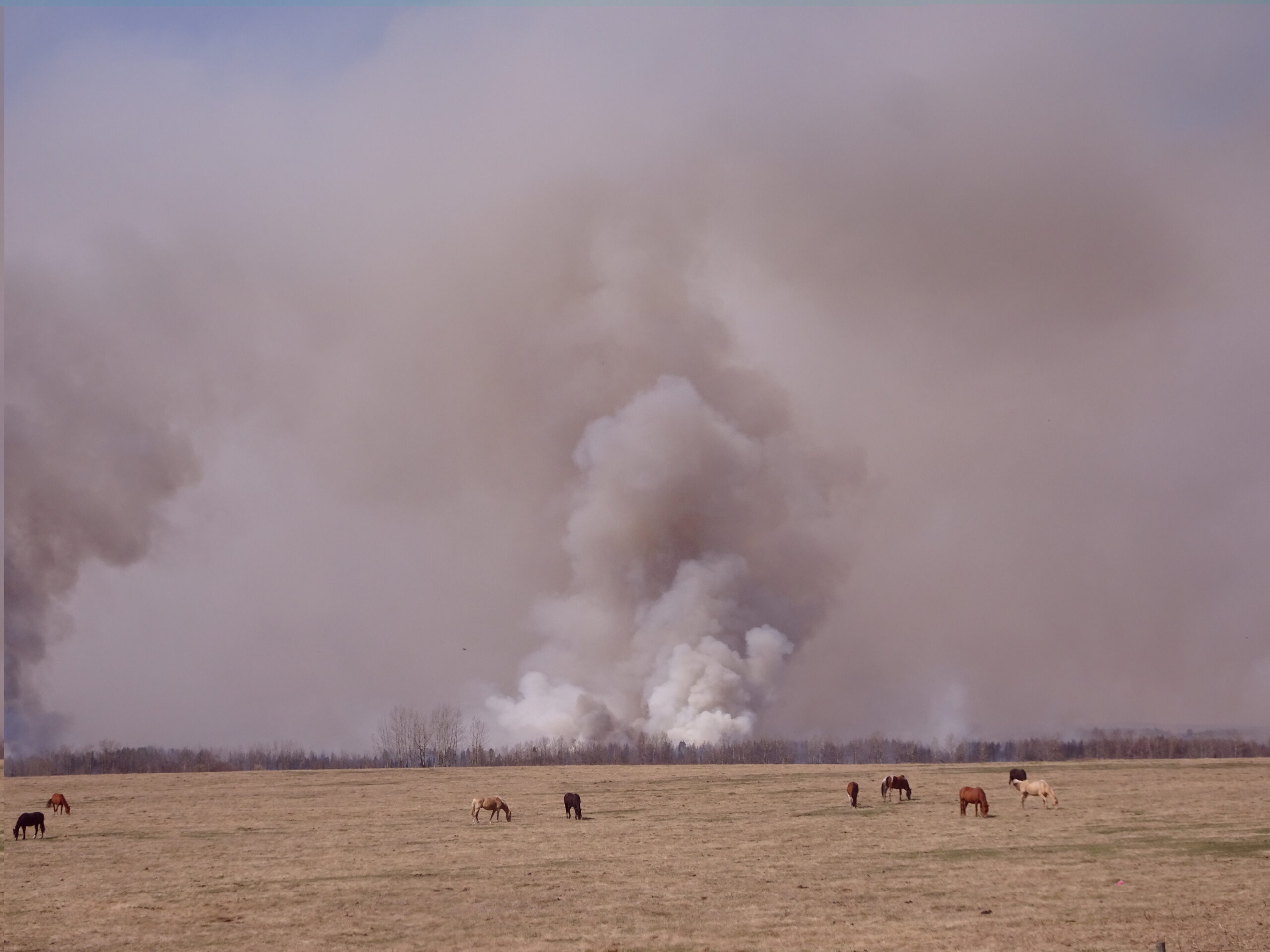
In 2023 Alberta has experienced an extreme wildfire season, kicking off in the spring and continuing into the summer. The wildfires and their effects have been devastating on the areas directly impacted, and smoke from the fires has been a health concern in nearby population centers and has caused exceptionally hazy and smoky conditions across Alberta.
Smoke from the wildfires has affected the Air Quality Health Index, with many Albertans experiencing coughs, burning eyes, sore throats and headaches. And high Air Quality Health Index warnings have kept people inside.
We have had a few people ask “How will the wildfire smoke we have been experiencing this year in Calgary and Red Deer affect lawns, gardens and trees?”
An article in Alberta Farmer Express from June 17, 2019, reports that “Impact of smoke on crops is more than a little hazy” and that “little research has been done on the phenomenon”.
“It is so plant and environment specific,” said Jeremy Boychyn, research extension agronomist with Alberta Barley and Alberta Wheat. “There are a number of factors that affect how it affects growth.” This includes crop variety or type of vegetation, where the plants are in the growth cycle, how close vegetation is to the actual fire, how thick the smoke is, how much light is getting through and more.
Thus, it is virtually impossible to answer how wildfire smoke will affect lawns, gardens, and trees, since there are so many variables, but we can share some thoughts on how vegetation may be impacted:
1. Reduced sunlight
Smoke particles in the air can block and scatter sunlight, leading to reduced light intensity reaching lawns, gardens, and trees. This can hinder photosynthesis, the process by which plants convert sunlight into energy. Consequently, plants may experience slower growth, reduced vigor, and potentially delayed or diminished flowering or fruiting.

Smoke from wildfires creates a red sun in Calgary at Heritage Park
2. Poor air quality
Smoke contains pollutants such as particulate matter and harmful gases, depending on what is burning. These pollutants can settle on the surfaces of leaves, lawns, and gardens. When they accumulate, they can hinder the exchange of gases and nutrients through stomata, the tiny pores on plant leaves. This can impede respiration, nutrient absorption, and transpiration, which may weaken plants and make them more susceptible to diseases and pests.
3. Leaf damage
Smoke contains chemicals and soot particles that can deposit on the leaves of plants. This can create a layer of residue, which may interfere with the plant’s ability to carry out photosynthesis effectively. In some cases, it can cause discoloration or scorching of leaves. This can be particularly evident on sensitive plant species.
4. Water stress
Smoky conditions can contribute to drier atmospheric conditions. Increased dryness can lead to elevated water evaporation rates from lawns, gardens, and trees. The combination of reduced sunlight and increased evaporation can result in water stress for plants, especially if adequate irrigation is not provided.
5. Increased pest activity
Smoke can disrupt the natural balance of ecosystems and lead to changes in insect populations. In some cases, the disturbance caused by fires and smoke can favor certain pests, making them more prevalent. Additionally, weakened plants as a result of smoke exposure may be more susceptible to pest infestations.
6. Tree stress & mortality
Trees are particularly vulnerable to the effects of smoky skies. Prolonged exposure to smoke can stress trees, making them more susceptible to secondary infections and insect attacks. Species already under stress or facing other environmental pressures may be at higher risk of experiencing mortality.
What You Can Do To Help
To mitigate the impacts of smoky skies on lawns, gardens and trees, consider taking the following measures:
1. Adequate watering
Ensure that lawns, gardens and trees receive sufficient water to compensate for increased evaporation and potential water stress caused by smoky conditions.
2. Gentle cleaning
If a layer of residue has settled on plant leaves, consider gently rinsing them with water to remove the buildup, helping to restore their ability to carry out photosynthesis.
3. Monitor & address pests
Keep a close eye on your plants for signs of pest activity and take appropriate measures to manage infestations promptly.
4. Seek professional advice
Consult with local lawn care specialists, horticulturists or arborists for specific guidance on caring for lawns, gardens, and trees and to answer any questions you may have. Please feel free to contact our experienced team if you have any questions.
It’s important to note that the severity of the effects will depend on the intensity, duration, and proximity of the fires, as well as the resilience and adaptability of the plant species involved.
Sources:
Alberta Farmer Express, Impact of smoke on crops is more than a little hazy
ONfruit, Itis Up in the Air: Concern about the Impacts of Smoke from Wildfire on Horticultural Crops

Recent Comments